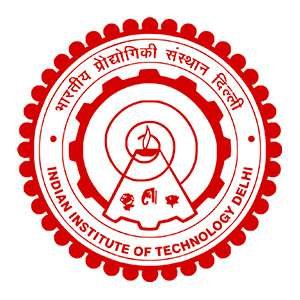IIT Delhi ( MSc Economics through IIT JAM )
The Department of Humanities and Social Sciences, Indian Institute of Technology Delhi offers a two-year full-time programme, Master of Science in Economics. Applications are invited from highly motivated UG students who envisage careers in academia, government, industry, and civil society organizations.
Diversified basket of electives Branching out in traditional as well as in emerging directions Two semesters long project prepares the students to carry out independent research Unique cross-disciplinary after the core foundations in economics
Admission Procedure through IIT JAM
Qualified candidates can submit their applications for the program via the Joint Admission Test for Masters (JAM).
Eligibility Criteria for Msc in Economics at IIT Delhi 2024
For eligibility in IIT Delhi’s M.Sc. in Economics program, candidates must fulfill the following criteria: Bachelor’s Degree: Applicants should hold a Bachelor’s degree (B.A./B.Sc./B.Com /B.Stat./B.Math./ B.Tech/B.E. or its equivalent). Minimum CGPA or Percentage: Candidates from the General/OBC/EWS categories should have a minimum CGPA of 5.5 on a 10 point scale or its equivalent. Alternatively, they should have secured a minimum of 55% marks in aggregate without rounding-off in their qualifying degree. Relaxed Criteria for SC/ST/PwD: Individuals belonging to the SC/ST/PwD categories should have a minimum CGPA of 5.0 on a 10 point scale or equivalent, or a minimum of 50% marks in aggregate without rounding-off in their qualifying degree.
No. of Seats in Master Of Science [M.Sc.](Economics) at IIT Delhi
IIT Delhi offers a total of 25 seats for its M.Sc. Economics program through the JAM examination, with a special provision for 15 additional seats, making it a total of 40 seats in the program.
Fees for IIT Institutes
Please be aware that the fees for the program may differ from one institute to another. To get the exact fee details for your chosen institute, it’s advisable to visit the official website of that institute. This will ensure you have the most accurate and current information about the fees.
IIT JAM Entrance Exam Syllabus
Microeconomics
Consumer theory: Preference, utility, budget constraint, choice, demand, Slutsky equation, revealed preference axioms. Theory of production and cost: Production technology, isoquants, returns to scale, short run and long run costs, cost curves. General equilibrium and welfare: Equilibrium, efficiency, welfare economics. Market structure: Perfect competition, monopoly, price discrimination, monopolistic competition, oligopoly. Game theory: Strategic form games, Nash equilibrium, mixed extension, Prisoner’s dilemma. Public goods and market failure: Externalities, public goods, asymmetric information.
Macroeconomics
National income accounting: Concepts, measurements, fiscal and foreign sector variables.Behavioural and technological functions: Consumption functions, investment functions, money demand and supply.Business cycles and economic models: Classical model, Keynesian model, IS-LM Model, Hicks’ IS-LM synthesis, monetary and fiscal policies. Inflation and unemployment: Theories, measurement, causes, effects. Growth models: Harrod-Domar, Solow, Neo-classical growth models.
Statistics for Economics
Probability theory: Sample space, events, random variables, probability distributions, expectation, variance, functions of random variables. Mathematical statistics: Random sampling, estimation, hypothesis testing, correlation, regression.
Indian Economy
Indian economy before 1950: Transfer of tribute, deindustrialization. Planning and Indian development: Planning models, challenges. Indian economy after 1991: Balance of payments crisis, economic reforms. Banking, finance, and macroeconomic policies: Banking, financial sector reforms, fiscal and monetary policy, savings and investment. Inequalities in social development: Achievements, disparities between Indian States. Poverty: Methodology, issues in poverty estimation. India’s labour market: Unemployment, labour force participation rates.
Mathematics for Economics
Preliminaries and functions: Set theory, elementary functions, sequences and series, complex numbers. Differential calculus: Limits, continuity, differentiability, mean value theorems, partial differentiation, higher order derivatives, implicit function theorem. Integral calculus: Definite integrals, fundamental theorems, indefinite integrals. Differential equations, and difference equations: First order difference equations, first order differential equations. Linear algebra: Matrix representations, systems of linear equations, linear independence, determinants, eigenvectors and eigenvalues, symmetric matrices. Optimization: Local and global optima, multivariate optimization, constrained optimization, linear programming.
Please note that this is a summarized version of the syllabus.
IIT JAM 2024 Paper Pattern
The exam will last for 3 hours. It will be conducted in English only. There will be a total of 60 questions, and they will be divided into three sections: A, B, and C, all of which are mandatory.
Section A: This section has 30 Multiple Choice Questions (MCQs), with 10 questions carrying one mark each and 20 questions carrying two marks each. Each MCQ will have four options, and you select the correct one.
Section B: This section contains 10 Multiple Select Questions (MSQs), each carrying two marks. MSQs are similar to MCQs, but there can be more than one correct answer. You need to select all the correct choices to get full credit.
Section C: This section includes 20 Numerical Answer Type (NAT) questions, with 10 questions worth one mark each and 10 questions worth two marks each. For NAT questions, you need to provide a numeric answer using the virtual numeric keypad on the screen; there are no answer choices.
IIT JAM Entrance Exam Marking Scheme
If you leave a question unanswered in any section, you won’t receive any marks. In Section A (MCQ), providing a wrong answer will lead to negative marking. For each incorrect response to 1-mark questions, 1/3 mark will be deducted, and for each incorrect response to 2-mark questions, 2/3 mark will be deducted. In Section B (MSQ), there are no negative marks, and no partial marking is available. In Section C (NAT), there is no negative marking either.
Placements after IIT JAM
Placement opportunities can vary between institutes, so it’s advisable to visit the respective institute’s website for the most accurate and up-to-date information on placements. However, our graduates have found roles in various fields such as data analytics, risk analytics, marketing analytics, data science, consulting, market research, quantitative research, investment banking, credit risk management, and market risk management. Notably, the students have been recruited by esteemed companies like American Express, Boston Consulting Group, Deutsche Bank, Edelweiss, EXL Service, Goldman Sachs, ICICI Bank, JP Morgan Chase & Co., Mastercard, McKinsey & Company, Merrill Lynch, PwC DIAC, Walmart, Wells Fargo, and Wipro.
An active and dynamic programme of securing job opportunities for students graduating from the Institute is arranged by inviting organisations from across the globe to conduct selection processes and interviews. Organisations that have hitherto not participated in Training or Placement of the students are contacted actively.



